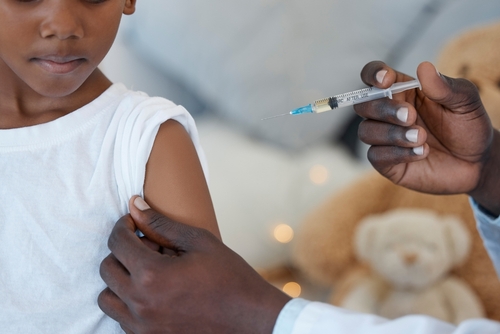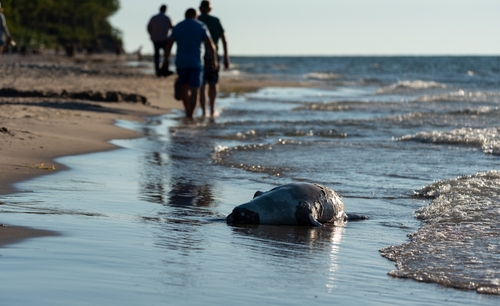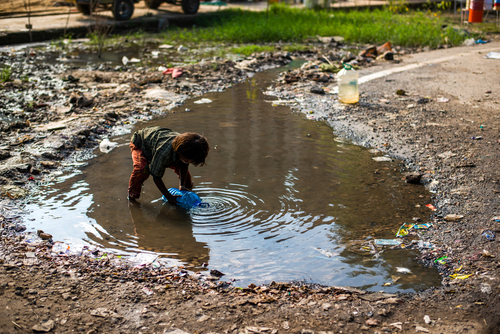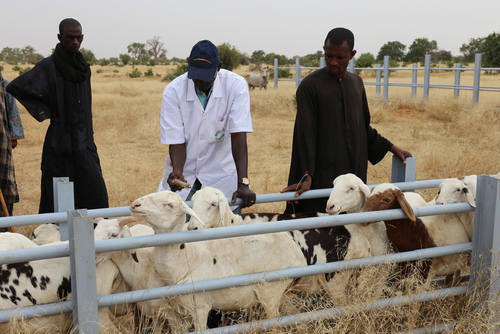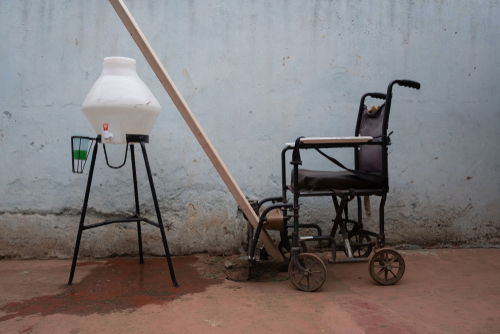May 06, 2024

Avian influenza may be under-detected in humans in the United States
The current avian influenza outbreak in the United States has only one confirmed case of animal-to-human transmission. However, some epidemiologists suspect additional cases based on reports from veterinarians and farm workers. While genetic sequencing suggests the virus is not easily transmissible between humans, concerns persist about undetected cases, especially mild ones. Limited testing on humans raises worries about underestimating exposure. Despite efforts to assess dairy product safety and improve surveillance, there are gaps regarding detection in humans. Proactive testing and collaboration between health officials and farms are critical to addressing potential risks and preventing further spread, particularly to other types of farms. [NPR]
Effects of mineral scarcity on disease spillover risk in forest wildlife
Field observations of chimpanzees and other wildlife in Budongo Forest Reserve, Uganda, eating bat guano to compensate for dietary mineral scarcity raise concerns over the potential spillover of viruses from bats to forest wildlife. Metagenomic analyses of the bat guano reveal the presence of a novel betacoronavirus (BHRGV-1) in over half of the collected samples, which has high structural similarity to SARS-CoV-2. These findings underscore the downstream effects of the substantial exploitation of forest flora such as Raphia farinifera, a mineral-rich palm usually found in the Budongo Forest, between 2006 and 2012. [Nature Communications Biology]
Immunization efforts have saved over 150 million lives in the past 5 decades
Global immunization efforts have saved approximately 154 million lives over the past 50 years, according to a study led by the World Health Organization. The greatest impact was among infants, with the measles vaccine having the most substantial impact on reducing infant mortality. For each life saved through immunization, 66 years of full health were gained, equivalent to 10.2 billion full health years over the past 50 years. [WHO]
A call for expanded AMR surveillance in wild mammals
The current landscape of knowledge regarding wildlife as reservoirs of antimicrobial resistance (AMR) is limited to reflections of antimicrobial use in human and veterinary medicine. A comprehensive understanding of wildlife sentinels of AMR requires continued surveillance, as the presence of AMR in small, wild mammals can predict its spread to larger mammalian hosts. Resistance monitoring can be added to existing wildlife surveillance tools (markedly more available in the Global North than in the Global South) to contribute to the One Health approach to mitigating AMR. [American Journal of Veterinary Research]
Evaluating award-winning hospitals for their hand hygiene compliance
A retrospective analysis of the Hand Hygiene Excellence Award (HHEA) – awarded to 97 healthcare facilities in the Asia-Pacific, Europe, and Latin America regions – found that hand hygiene compliance was above 70 percent in the awarded facilities between 2010 and 2021. Hand hygiene compliance was positively correlated with scores on a hand hygiene self-assessment framework and with alcohol-based handrub consumption. A key challenge in hand hygiene implementation was prioritizing safety at an institutional level, which requires engagement and interest from facility leadership. [Antimicrobial Resistance & Infection Control]
Factors associated with exposure to ticks and tick-borne diseases in northeast China
A quantitative study of residents in northeast China found that individual behavioral factors, such as a preference for outdoor activities and a heightened awareness of tick-borne illnesses, determined the participants’ risk of exposure to and infection with tick-borne diseases. Although environmental factors played a secondary role in the individuals’ exposure to tick bites, their impact on tick-borne disease risk might increase due to growing public interest in outdoor activities. [One Health]
Implications of regenerative agriculture on NCD management
A review highlights the value of regenerative agriculture (RA) in mitigating non-communicable diseases (NCDs) due to its reliance on natural processes, soil health prioritization, and livestock integration. Previous research has linked human diets with the gut microbiome and its ability to manage NCDs, sparking interest in food’s capacity to support the gut microbiome. As our understanding of the effects of nutritional intake on the human body’s ability to prevent and manage NCDs grows, RA emerges as an important field that warrants further research and consideration. [One Health]
Women in Africa disproportionately experience severe, infection-related maternal outcomes.
Findings from the Global Maternal Sepsis Study highlight the predominance of infection-related severe maternal outcomes (SMOs) in Africa (19.6 percent) compared to the other WHO regions. Women in Africa were more likely to experience SMOs than those in South-East Asia (adjusted odds ratio: 2.60), in the Americas (aOR: 2.41), and in the Eastern Mediterranean region (aOR: 1.58). [PLOS Global Public Health]
Chagas disease among Bolivian migrants in Brazil
Chagas disease, a neglected tropical disease affecting 6-7 million globally, causing around 10,000 deaths every year, was once primarily confined to underprivileged rural areas. However, urbanization, migration, and globalization have made it a growing concern in urban, non-endemic regions of Latin America. A qualitative study including Bolivian immigrants in São Paulo, Brazil, found that unfamiliarity with the Brazilian healthcare system was a significant barrier to accessing care for Chagas disease. Notably, some participants did not anticipate changes to their daily life after testing positive for the disease because they did not have symptoms, highlighting the lack of awareness and understanding of the illness. [Frontiers in Tropical Diseases]
Conventional models may overestimate the effects of climate warming on malaria transmission.
An experimental study revealed that climate-associated warming in Kenya could have a lower impact on malaria parasite Plasmodium falciparum transmission than previously predicted. Compared to the conventional degree-day model, which predicts P. falciparum transmission intensity to increase between 43.1 and 79.0 times in Kericho, Kenya, due to climate warming, the study’s model predicts 3.63-3.93 times the increase in transmission. These findings indicate that conventional models may overestimate the effects of climate warming on malaria transmission intensity in cooler, malaria-endemic areas, such as the Kenyan highlands. [Nature Communications]
Image from Shutterstock

